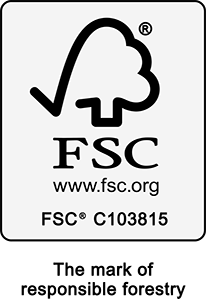AS Graanul Invest
Humala str. 2, 10617 Tallinn, ESTONIA
Humala str. 2, 10617 Tallinn, ESTONIA





On 07.07.2021 SOMO published a report on sustainability in the Estonian Forestry sector with the aim to research whether wood pellets used for co-firing in Dutch power plants are produced in compliance with the Dutch criteria for sustainable biomass. Given the position of our company in this sector and direct accusations made against us, we, Graanul Invest, believe it’s important to share our assessment of this report and its claims.
The SOMO report is mainly based on only one stakeholder’s claims and viewpoints – the Estonian Fund for Nature (ELF). Unfortunately, the assessment ignores important viewpoints of other stakeholders, expert groups and academia who are also very active in this field. Estonian forestry education is globally highly regarded and we have many forest management scientists who could explain and share their knowledge on these topics and concerns. Furthermore, the report completely ignores the responses of the State Forest Management Centre and does not use their public evidence as well as explanations to the very same topics addressed.
Graanul Invest acknowledges that the authors of the SOMO report requested us to review the draft report and we applaud that many incorrect cases and claims were removed after our input. We do not understand why some cases, with FMU level evidence available, were still left in the report with such unfounded criticism. In order to conclude that these examples were devastating and unsustainable there should be evidence of a clear violation of local laws or a certification body non-conformance notice. Since, also the input and feedback of local regulatory, enforcement and certification bodies was not requested, the conclusions of the report are uninformed and subjective.
The report’s claims overlook local forest management principles and laws, misunderstand the forest life-cycle, seasonal behaviour of species and ignore historic landscape management impacts of the Soviet Union. Handpicked cases from sensitive areas that are presented in the report are by no means representative of significant wood flow volumes or Estonian forest management as a whole, but are in line with sustainability requirements and state regulations nevertheless.
Estonian State Forest Centre has a long history of inventorying and conserving woodland key habitats in our State forests. Each year new sites of great conservation value are being identified; according to RMK-s internal procedures, as soon as the potential value is discovered, full protection against possible harm through harvest or any other activity is placed on that site. The claimed logging of unmapped woodland key habitats has never been presented in an identifiable or traceable manner. Over the years, auditors have meticulously examined all such claims and have not identified wrongful sustainability claims or gaps in WKH protection.
The compliance with any sustainability criteria (including SDE+) is up to competent third-party auditors to assess and Graanul Invest’s activities are audited regularly by several different certification bodies both local and international.
The report presents disturbing and wrong claims that Graanul Invest doesn´t have suitable systems and procedures in place to control the raw material that is used in its operations. In reality, we follow very strict requirements in biomass sourcing and the full supply chain is regularly and repeatedly audited from forest to production against set requirements.
For forest material physical properties, the first controls are done before the forest harvest where forest inventory specialists record the forest age, species mix and the potential assortments. This information is recorded in the national forest inventory database. The second screening is done by the forest owner or forest manager who plans to cut the forest stand. The harvest plan is presented to the Environmental Agency as a harvest permit application. Once a harvest permit has been issued by the authorities, the forest manager decides whether the final volumes and harvest conditions are economically feasible for a harvest. If so then the third layer of quality parameter screening is done during harvest where the actual cut logs and harvest residues are divided into quality class stacks according to their physical parameters. The actual harvest return and assortments are reported to the state so that their inventory data would remain accurate. The state monitors these volumes and has the authority to sanction if volumes or conditions of the harvests are exceeded. The fourth layer of screening for quality parameters (as well as origin, species and sustainability requirements) is done at the plant level. The first 3 layers of this described process are monitored and regulated by state authorities. The third parties are used to verify the correct implementation and evidence of the whole supply and production chain.
It is important to point out that even though connections with Graanul Invest production units are claimed to be evident, this information was not made available to us so we cannot verify if this material actually came to us, what was the quality class, was it used in our CHPs for local energy generation, in drum dryers for heat energy or in pellet production. Only the latter is relevant to the Dutch context.
Forest management in restricted areas that follows the strict conditions and fulfils the nature conservation expert’s recommendation for sanitary or maintenance cuttings, are viewed and should continue to be viewed, as positive examples of sustainable forestry and best management practices. Although a risk-based approach is allowed for sustainability criteria compliance for the renewable energy directive and certification systems, we are always keeping evidence of complete forest management unit level compliance as was demonstrated to the authors of this report. Because of this transparency and the level of evidence we collect, we can confidently respond to concerns and demonstrate compliance year in year out.
There are large protection areas in the Baltics and strong biodiversity protective measures in the forest laws. These are well followed today and forest management will continue to respect and benefit biodiversity.
All Natura 2000 network harvests are carried out conditionally and transparently. Every activity is assessed and compliance confirmed by the Estonian Environmental Board: the government agency responsible for implementing and controlling state policies on environmental use and nature conservation. Harvests in Natura areas are very limited in scale, duration and species mix and never extend to a Forest Management unit (FMU) as a whole, or over 1 hectare per single clear-fell harvest size – this means that harvests are very small. Forest management intensity of Natura areas is extremely low and there is absolutely no economic pressure to harvest these areas.
As also the SOMO report states, the majority of harvests are carried out in the limited management zones and therefore are very restricted. Natura network areas are not a widely used source of timber in the wood sector but if restricted harvests are carried out in the networks then the harvested wood is used like all other feedstock in the sector.
Net protection and improved state of 73 337 hectares of habitats has happened in a very short period and the conservation policies and the Natura 2000 objectives are advancing sufficiently: please find more on this at the Estonian Environmental Board.
Graanul Invest has a 2-layer woodland key habitat (WKH) detection system which is based on the official public forest registry and the voluntary database prepared by local NGOs (including ELF). This way we can always detect potential WKH overlaps and request additional field-level information about the forest harvest site. Should the information be insufficient to determine low risk, we can reject this feedstock before storage.
WKH area has increased 33% in the last 10 years and the action plans for this conservation area type are progressing well. All wood and forest industry participants are monitoring this risk area and keeping this risk low with continuously improving procedures and data systems.
Conditional maintenance harvests are done under the Estonian Land Improvement Act § 47, § 48 , § 90, which obliges the landowner to clean and maintain land improvement infrastructure elements to guarantee the working condition of the protection zone of artificial upstream recipients of the region.
These works are required by law and violating these requirements is punishable by a fine. Not a single sustainability requirement or standard requests the forest owner go against the local law or forbids to participate in the maintenance of upstream recipients or larger water systems. It is inconceivable how this can be shown as a violation in the report after the Land Improvement Act was explained to the authors.
The Soviet-era drainage systems have of course caused damage to our mires and forest ecosystems but these areas have stabilized over the decades meaning that a new equilibrium has been reached and the extensive release of soil carbon has stopped. In order to maintain this new balance in these already changed ecosystems the old drainage systems need to be maintained. This is equally important in state forests and private forests.
We strongly disagree that maintaining old drainage systems and decades ago drained ecosystems is causing new depletion or greater medium-term or long term emissions release, rather the opposite.
The State Forest’s (RMK) response should have been used in the report in order to give a comprehensive answer to the public domain. RMK is very open about their drainage system maintenance activities and openly evaluates the environmental short term and long-term impacts of such projects when done on a larger scale. Their strategy for these projects is public and so are the environmental impact assessments of all recent and future projects.
These are available to public scrutiny as well as reviewed by environmental state authorities and third-party auditors. Such areas are not common sources of wood for the industry but when harvested in line with the EIA and management area landscape and forest management plans then this wood is deemed sustainable and is in no violation with any sustainability criteria. These forest products will receive a similar cascading in the wood industry like wood from normal managed forests.
Estonia has very strict forest laws and the amount of protected forest area has increased in time. Relevant restrictions have been developed by the Environmental Board and experts, considering the specifics of each area and the needs of the species living there. Graanul Invest Group and our forestry companies follow all those requirements very diligently.